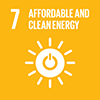Description/achievement of initiative
Global Peace Development (GPD) is the Global Peace Foundation’s community-based development program that is committed to fostering family self-reliance in the communities in which it works. GPD began as a solar lamp and streetlight distribution program, and has now developed into a community-based development model promoting self-reliance on the family and community levels. Access to a clean, dependable light source in the hours of darkness results in improvements in security, education, business, and health. When solar lights are introduced as part of a comprehensive effort to foster self-reliance on the family level, that impact is magnified and community resilience is enhanced. GPD’s approach to community development is thus much broader than the introduction of solar energy alone. GPD works with communities on an on-going basis to support their own efforts to flourish and to be sustainable.
Implementation methodologies
Global Peace Development (GPD) combines solar technology with clean water solutions, education, income generation and public-private partnerships to improve the overall quality of life in measurable ways. The introduction of solar energy has a significant impact on the quality of life in impoverished communities.GPD works with communities in developing nations to identify development priorities and the ways on which solar energy can best be utilized to address those priorities. To that end it seeks to raise self-reliant owners of local communities supported by international donors motivated by the same vision. GPD’s work includes workshops, trainings and enterprise development to promote education, health, economic development and security. These interventions are an effective way of breaking the cycle of poverty and dependence and establishing vibrant communities.
Arrangements for Capacity-Building and Technology Transfer
There is adequate arrangement for transfer of capacity and technology by involving community members actively in all stages of the program. GPD is also creating a link between community members and local government authorities as well as relevant stakeholders. This ensures self-reliance. However, local self-reliance does not necessarily mean self-sufficiency but a self-reliant community is self-governing and capable of identifying and developing the resources that are necessary for its prosperity.
Coordination mechanisms/governance structure
GPD is currently working to establish development models in Asia, Africa and Latin America. Experience has shown that when given clear explanations of the process, access to information and appropriate capacity and support, impoverished communities can effectively organize to identify priorities and address local problems by working in partnership with local governments and other supportive institutions. Needs assessment in the communities GPD recognized the need to more accurately measure the needs in the communities. GPD reached an agreement with Fundación Paraguaya to use their “Poverty Stoplight” monitoring and evaluation tool for its programs. The family-focused evaluation process begins with a self-assessment performed by the families themselves and the implementation of an action plan tailored to the needs of that family. Fundación Paraguaya has identified six dimensions of poverty and the “Poverty Stoplight” offers a simple way of assessing the family’s level of poverty in each of these dimensions: Level 1: Color Red "Extreme Poverty" – Means that the family is extremely poor.Level 2: Color Yellow "Poverty" – Means that the indicator is present but insufficiently or in process of being achieved.Level 3: Color Green "No Poverty" – Means that the indicator is present in an efficient manner or has been fully achieved.Fundación Paraguaya has established a successful track record with this approach since it engages families in their own assessment and development. GPD is excited about working with local partners to implement this approach in the Dominican Republic, the Philippines and Kenya.
Partner(s)
Global Peace Foundation (GPF), Fundacion Paraguaya, Service For Peace



 December 2016
December 2016
 December 2017
December 2017
 Time-frame: January 2015 - December 2017
Time-frame: January 2015 - December 2017